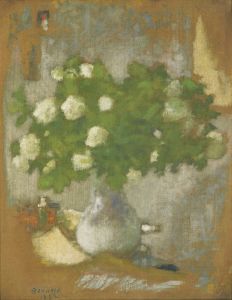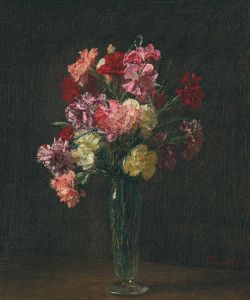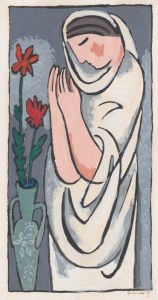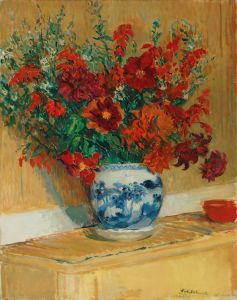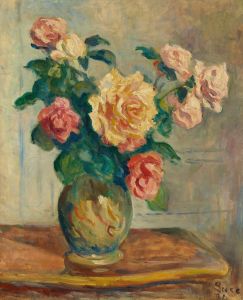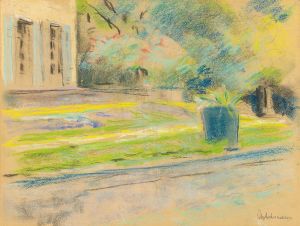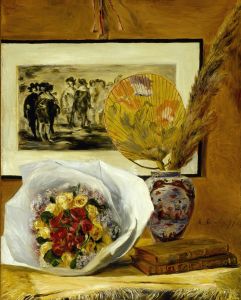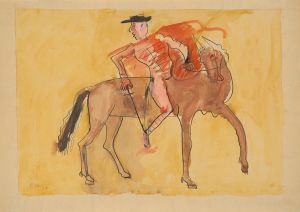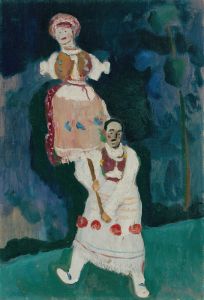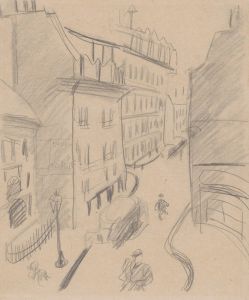
Bouquet
A hand-painted replica of Cyprián Majerník’s masterpiece Bouquet, meticulously crafted by professional artists to capture the true essence of the original. Each piece is created with museum-quality canvas and rare mineral pigments, carefully painted by experienced artists with delicate brushstrokes and rich, layered colors to perfectly recreate the texture of the original artwork. Unlike machine-printed reproductions, this hand-painted version brings the painting to life, infused with the artist’s emotions and skill in every stroke. Whether for personal collection or home decoration, it instantly elevates the artistic atmosphere of any space.
Cyprián Majerník was a Slovak painter known for his poignant and expressive works, often reflecting the turbulent times of the early to mid-20th century in Europe. Born on November 24, 1909, in Veľké Kostoľany, then part of Austria-Hungary, Majerník's career was marked by his unique style that combined elements of expressionism and surrealism. His works often depicted themes of existential struggle, human suffering, and the absurdity of war, influenced by the socio-political upheavals of his time.
One of Majerník's notable works is "Bouquet," a painting that exemplifies his artistic approach and thematic concerns. While specific details about the painting "Bouquet" are limited, it is consistent with Majerník's broader oeuvre, which frequently incorporated symbolic and allegorical elements. His paintings often featured distorted figures and dream-like landscapes, reflecting his interest in the subconscious and the emotional states of his subjects.
Majerník studied at the Academy of Fine Arts in Prague, where he was influenced by the avant-garde movements of the time, including surrealism and expressionism. His education and the cultural milieu of Prague, a hub for artists and intellectuals, played a significant role in shaping his artistic vision. Throughout his career, Majerník was deeply affected by the political instability and the rise of totalitarian regimes in Europe, which is evident in the somber and introspective nature of his work.
"Majerník's Bouquet" can be seen as part of his exploration of beauty amidst chaos, a recurring theme in his paintings. The use of flowers in art has traditionally symbolized a range of emotions and ideas, from the ephemeral nature of life to the possibility of renewal and hope. In the context of Majerník's work, a bouquet might serve as a metaphor for the fragility and transience of human experience, set against the backdrop of a world in turmoil.
Despite the challenges he faced, including a battle with multiple sclerosis, Majerník continued to paint and exhibit his work. His paintings were well-received in various exhibitions, and he became an influential figure in Slovak art. Tragically, his life was cut short when he died on July 4, 1945, in Prague, at the age of 35. His legacy, however, endures through his evocative and thought-provoking body of work.
Majerník's contribution to art is recognized for its emotional depth and its reflection of the human condition during one of the most challenging periods in modern history. His paintings, including "Bouquet," remain significant for their ability to convey complex emotions and for their commentary on the societal issues of his time. Today, his works are held in high regard and are part of collections in various galleries and museums, continuing to inspire and resonate with audiences.





